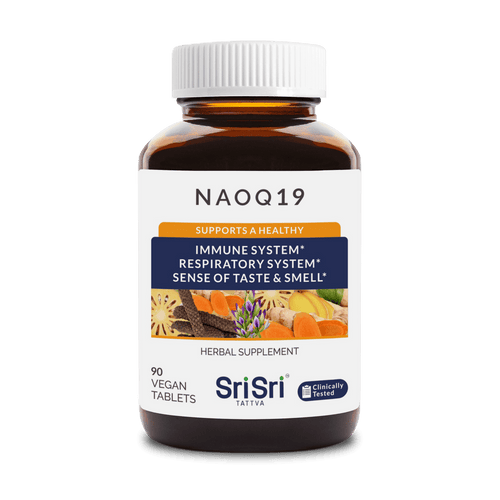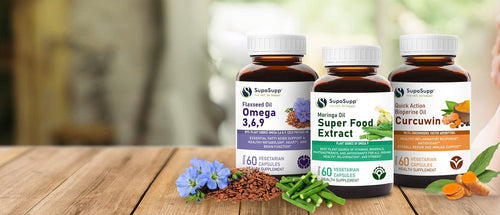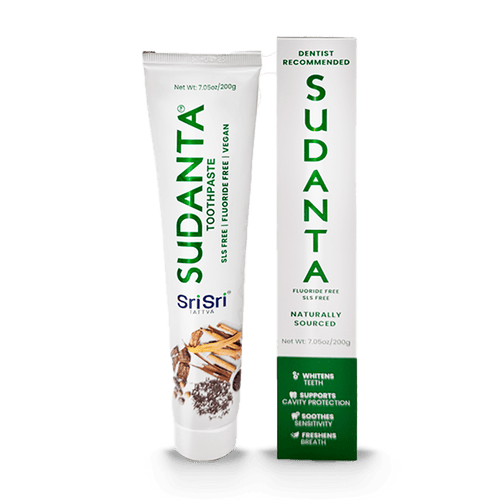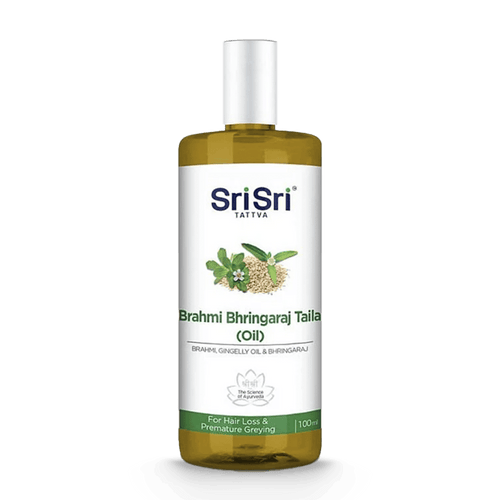Aaron Rodgers recently talked about a 12-day Panchakarma cleanse he underwent, that helped him ‘re-center’ and brought in him a sense of ‘intense gratitude’, piquing people’s interest in this ancient art of detox that happens to be a cornerstone of the ayurvedic system of medicine.
What does Panchakarma do?
According to Ayurveda, at the root of a disease is the imbalance of doshas or bio-energies (don’t know what a dosha is? Read an introduction here .) There is certain bio intelligence in our body that helps the body heal itself, like a wound or a cold. Then there is the immune system that fights off pathogens. But as we age, from the beating of external triggers like pollution, bad lifestyle, unfavorable diet, and stress, toxins start building up in the system. These toxins and a misaligned lifestyle together weaken our immunity and overwork the body’s natural healing ability. Panchakarma helps us restore our wellness by aligning our natural rhythms, balancing the doshas, improving immunity, and strengthening the body’s ability to heal. This is done by removing the toxins from the body, realigning our lifestyle according to our individual constitution and its requirements. Panchakarma, as part of Ayurveda, involves a set of rejuvenating and restorative cleanses, based on an individual’s Dosha constitution (check out your Ayurveda body type here.) The treatments use various natural essential oils and lepas or masks/wraps, healthy fats, a specific diet which is usually light on the stomach, some lifestyle changes, workouts and ayurvedic guidance to target the specific imbalances and Ama (toxins) in the body.
Panchakarma: Benefits
After the panchakarma cleanses that help you get rid of all types of toxins, you feel energized, light, sharp, calmer, healthier, and more positive, a feeling that Rodgers shared as an ‘intense gratitude.’ The detoxes also help unclog the lymphatic system; get the body fluids moving; aids blood circulation and digestion; regenerate healthy cells, and improve immunity. There are treatments that focus on improving various organ functions like skin, kidneys, liver, digestion, or lymphatic system.
- Emotional cleanse: Apart from the physical toxins, panchakarma is a holistic treatment that also helps you get rid of emotional baggage and emotional toxins that we have been carrying from our relationships in the form of anger, resentment, anxiety, guilt, hatred, or feelings of inadequacy.
- More energy: Panchakarma helps increase your prana or life force. When your body and mind are devoid of visible and invisible toxins, the sattva or purity of consciousness is naturally high and you feel energized, nourished, and rejuvenated.
- The body feels light and mind is clear: The wholesome combination of cleanses, nutritious and balanced meals, yoga and mind-body practices-all come together to bring deep clarity and lightness of being. Additionally, the act of slowing down and being away from urban hustle can help remove mental fatigue and eliminate stress.
- Pain Relief: If you have been dealing with chronic body pain for some time or you sense it is an onset of such pains, panchakarma is your go-to. It is non-invasive and heals the cause of pain from its root, by addressing the dosha imbalances that cause the pain in the first place.
- Better Sleep: Sleep has been eluding you? Panchakarma can play an important role in regularizing your circadian rhythm. This is because sometimes poor sleep is a result of excess vata dosha and panchakarma can help tame excess vata very effectively.
- Losing weight: Not only do you lose the weight of mental burdens and worries but a Panchakarma detox can also help you lose physical weight by cutting out the toxins from your system and removing the junk from the diet. Customized yoga sessions; nature time; a light diet can help you lose the water weight.
Panchakarma is preventive as also curative. Research shows it has incredible benefits in healing pain related to chronic illnesses like arthritis, osteoporosis, chronic fatigue, migraines, and some skin disorders.
Panchakarma: Which cleanse do I need?
There is no one-size-fits-all treatment in Ayurveda. Every individual needs specific combination of panchakarma cleanses based on his/her prakruti or constitution, a diet that is tailor-made for balancing specific doshas, and lifestyle changes. For example, a person with vata imbalance will need to include some healthy carbs or heavy foods to balance the excess air element, which may not be suitable for a person with Kapha prakruti; while people with Kapha excess maybe recommended gradual inclusion of slightly more rigorous forms of workouts to fight the excess earth element in the form of lethargy and inactivity. The duration of the treatment may also vary based on the severity of the imbalances, availability, and need of the patient. Do you need a Panchakarma or should you meet with an Ayurveda expert first? I would recommend meeting with a Ayurveda practitioner first to know if you need a complete detox or whether some herbs may simply do the trick! Discover if you need Panchakarma.

Book your consultation with a Senior Ayurveda Practitioner here! A seasoned Ayurveda practitioners (vaidyas) can help assess and map your current state of overall health; illnesses one may be predisposed to, conditions you may need to look out for, and doshas that need to be balanced. You will then be recommended a set of treatments personalized for your unique dosha.
Where can you get a Panchakarma done?
If your Ayurveda practitioner prescribes specific panchakarma treatments, you can check out the award winning Panchakarma Detox Retreat at the Shankara Ayurveda Spa, available online as well as offline. It is a heavenly experience that pampers your senses, detoxes your systems, and relaxes the mind with meditations and blissful chants. It includes
- Ayurveda treatments for two and half hours daily.
- Abhyanga (warm oil massage)
- Swedana (steam room therapy)
- Combinations of several treatments, such as shirodhara, karna purna, nasya, marma, kati basti, or netra tarpana, as recommended for you
- A therapeutic, organic diet designed to support your treatments
- Ayurvedic cooking classes, meditation, pottery classes, and daily kirtans.
How is Panchakarma done?
Panchakarma involves three phases-Purva karma which is the preparatory phase; pradhan karma which is the main treatment and then pashchat karma or the process of bringing the body back to normal when it can go back to regular diet and lifestyle.
Poorva karma
The treatments, in this phase, focus on loosening the toxin deposits through therapies like snehana (oleation therapy using fats) and swedana (sudation.) Snehana therapies include Shirovasti where medicated oil is let to stay on the head with the aid of a special cap. Another treatment is Shirodhara considered useful for anxiety issues, insomnia, hair fall, and stress. It involves pouring a stream of medicated oils over the head. The medicated oils used for snehana are chosen depending on the person’s natural constitution and other health conditions. This therapy pacifies Vata, improves digestion and improves bowel movement. Swedana (sudation) is where the body is made to sweat. Shashtika shali pinda sweda is one such technique where the body is massaged using a special type of rice, packed in cotton cloth; the other treatment is Pizhichil where warm medicated oil is put on the body in a specific manner to produce sweat.
Pradhan karma: the main therapies
Here you will encounter five important procedures:
- Vamana: Therapeutic emesis that focuses on removing excess Kapha dosha through controlled vomiting. The vomit is induced using specific foods and herbs.
- Virechana: This involves purging the vitiated doshas and toxins from the stomach, liver, gall bladder through the anal route.
- Anuvasana: This is enema where medicated oil is administered through the anal passage.
- Asthapana: Here a decoction made using specific ayurvedic medicines is blended in honey or ghee, rock salt and paste of dill seeds, which is administered through the anal passage gently.
- Nasya: In this procedure, herbal formulation is administered through the nose along with a massage of the upper body, followed by rest and inhaling medicated steam.
In addition to the cleanses, you will also be recommended a specific diet to go with these stages of the treatment since the digestive system during the detox can be sensitive. You might also be recommended specific yoga asanas (yogic postures). Relaxation techniques like meditation and proper rest are also a part of your daily regime during this treatment.
Pashchat Karma or post-detox
Right after the first two stages we discussed above, the mind and body are light and fresh, and the digestive system is on a reset but the digestive fire is still weak and so you will need to continue with a lighter diet of lentils and rice, along with total rest. Slowly your diet will change from a liquid base to semisolids and then solid foods, once your digestive system is ready for it. During this time, you may be recommended to have lukewarm water for all purposes. You are also asked to refrain from excessive exposure to sensory activities like loud music, overexposure to digital screens rest your eyes from digital exposure; avoid stress or stress-inducing activities while in pashchat karma. You also need to sleep well during this treatment.
Published by Ruchira Roy
This content on the Sri Sri Tattva blog is not intended to be a substitute for professional medical advice, diagnosis or treatment. Always seek the advice of your physician, or other qualified health providers with any questions you may have regarding a medical condition. Any links to third party websites is provided as a convenience only and the Sri Sri Tattva Blog is not responsible for their content.





